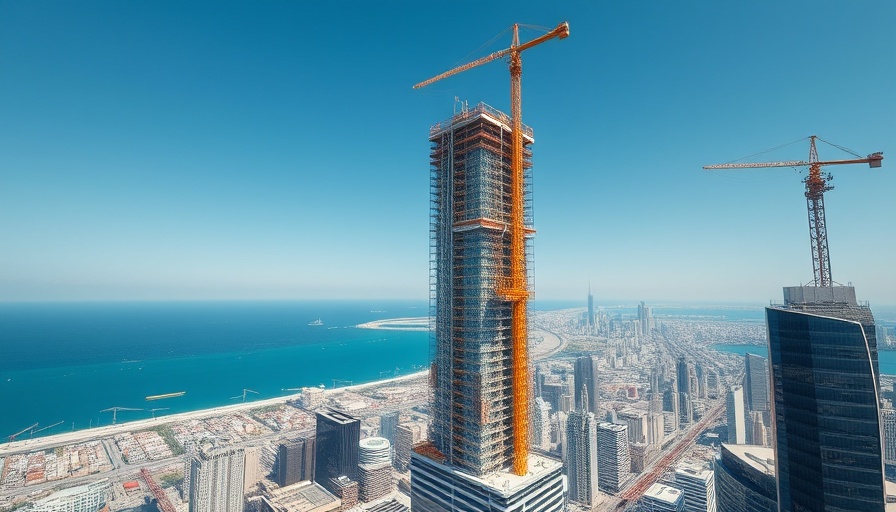
The Chrysler Building: An Art Deco Icon of New York City
As one of the defining masterpieces of Art Deco architecture, the Chrysler Building in New York City stands as a testament to the ambition and creativity of its era. Completed in 1930, it quickly became not only a symbol of this architectural style but also a significant player in the historical narrative of skyscrapers in the United States. Designed by architect William Van Alen for automobile tycoon Walter P. Chrysler, the building incorporates a range of automobile-inspired elements that showcase the industrial progress of the time.
A Race to the Top: A Historical Perspective
The period leading up to the Chrysler Building's construction saw a rather dramatic race amongst architects creating ever-taller skyscrapers. This competition culminated in the completion of the Chrysler Building, which stood at 1,046 feet (319 meters), making it the world's tallest building for a brief period until it was dethroned by the Empire State Building in 1931. Julius Norwich once described it as one of the most accomplished essays in Art Deco, emphasizing its modern, geometric, and — at the time — controversial design.
The Architectural Marvels Within
The structural design of the Chrysler Building is characterized by its sequence of setbacks, culminating in a crown that is clad in shiny stainless steel. This architectural choice not only magnified its height but also made it visually striking against the Manhattan skyline. Gargoyles resembling Chrysler hood ornaments and other ornate features speak volumes about Walter Chrysler's vision to proclaim the glory of his cars through this towering structure.
Crowning Glory: The Tower's Distinct Features
Arguably the most picturesque aspect of the Chrysler Building is its crown, which is made up of seven radiating arched elements. This remarkable design feature, coupled with triangular windows, has helped solidify its place in architectural history. It serves as an enduring national symbol of American ingenuity and luxury. Harold Cobb noted that it has become an icon of the stainless steel industry, linking it to early-20th-century modernity.
Functional Aspects and Use Over Time
From the beginning, the Chrysler Building was intended not just as an architectural statement but also as a functional space. As of 2024, it is primarily an office building with some retail at the base. However, maintaining the building has posed challenges, with reports of cracks and outdated infrastructure bringing into question how the space can continue to function effectively while preserving its heritage.
What Makes the Chrysler Building Unique?
The Chrysler Building is much more than a skyscraper; it embodies an era defined by innovation, art, and the American dream. Its intricate details, from the lobby’s luxurious finishes to its majestic exterior, make it a unique experience for both tourists and locals. Despite being unable to access certain areas that were once exclusive, visitors can still revel in the architectural beauty of the lobby and its history without purchasing a ticket, making it widely accessible.
Current Recognition and Cultural Impact
Designated a New York City Landmark in 1978 and ranked among America’s favorite architectures in 2007, the Chrysler Building maintains its status not just as a tourist attraction but as an inspiring source of architectural admiration. Observers and architecture enthusiasts alike regard it as an embodiment of Art Deco style — modern yet filled with decorative flair that serves as a celebration of its time.
Now, influenced by the flexibility of remote work and digital nomad lifestyles, the Chrysler Building has also attracted businesses seeking unique office spaces that inspire creativity and productivity. This versatility symbolizes a melding of historic significance with modern functionality.
In understanding the Chrysler Building and its impact, it becomes clearer that spaces we occupy have the power to inspire not only productivity but creativity as well. As a digital nomad navigating remote workspace challenges, consider how the environment shapes your work dynamics. Seek not just comfortable desks but enriched, aesthetically inspiring spaces that heighten your experience, much like the one exhibited in the grand lobby of the Chrysler Building.
Take Action: Enhance Your Workspace
As a digital nomad, the environment significantly influences your workflow. By recognizing the importance of immersive, aesthetically pleasing workspaces, explore how the designs of historic buildings like the Chrysler can inspire your workspace choices. Aim to create a work area that not only fulfills ergonomic needs but also elevates your daily experience. Dive into exploring different workspace designs, and perhaps even consider how Art Deco principles can inspire your next workspace enhancement.
 Add Row
Add Row  Add
Add 




Write A Comment